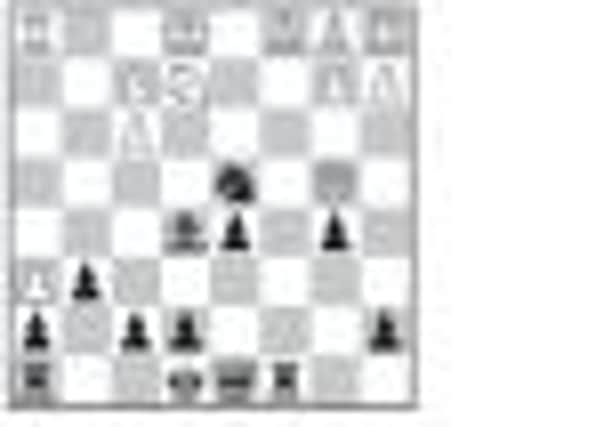Chess: How does Black win?


SAN SEBASTIAN in the Basque country is famous as the launchpad in 1911/12 of “unknown” Cuban José Raúl Capablanca, who went on to win the super-tournament there at his first major outing.
At the age of 23, Capablanca’s debut victory there propelled him to the dizzy heights of No 2 in the world. The rest, as they say, is history: He was the coming man, and ten years later Capablanca went on to beat Emanuel Lasker to be crowned world champion.
Advertisement
Hide AdAdvertisement
Hide AdTo celebrate the centenary of Capablanca’s famous victory, a new tournament with unusual new rules – dubbed the “Basque system” – was incorporated into the Donostia-San Sebastian Chess Festival over the holiday season. The festival held elimination matches in which the competitors played two simultaneous games against one another. If a match ended in a tie because each player won a game or both were drawn, it was followed by a play-off of two simultaneous rapid games and then, if needed, two simultaneous blitz games.
Many in the field, which included some of the world’s best, said they found the format interesting, but very confusing. The key to success, according to GM Loek Van Wely, was not to be distracted. He explained that while looking at one board, when your opponent moves on the other – ignore him. Focus!
In the end, Ukrainian Andrei Volokitin adapted best of all to the unusual new format to win the title, along the way beating Arkadij Naiditsch, Ruslan Ponomariov and Viktor Laznicka in the final.
A Naiditsch - A Volokitin
Donostia KO GpA., (4)
English/Grünfeld
1 Nf3 Nf6 2 c4 g6 3 Nc3 d5 4 cxd5 Nxd5 5 h4 Bg7 6 h5 Nc6 7 d4 Bg4 8 h6 Bf6 9 e4 Ndb4 10 d5 Nd4 11 Bd3 c6 12 Bb1 cxd5 13 e5 Bxe5 14 Qa4+ b5 15 Qxb4 Bxf3 16 gxf3 Rc8 17 Ne2 Rc2! 18 Kd1 a5 19 Qa3 Rxe2 20 f4 Qd7 21 Rg1 Bf6 22 Be3 Rxb2 23 Qxb2 Nf3 24 Qb3 Nxg1 25 Bd3 0–0 26 Rc1 Qg4+ 27 Kc2 Ne2 28 Re1 Rc8+ 29 Kb1 Nc3+ 30 Kc2 a4 0–1